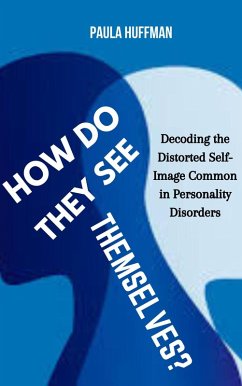The book delves into the psychology behind common personality disorders such as borderline, narcissistic, and antisocial personality disorders, offering insight into the intricacies of how individuals with these disorders perceive themselves. Huffman skillfully explains how a warped self-image shapes their actions, thoughts, and interpersonal dynamics.
Central to Huffman's analysis is the idea that personality disorders often involve a fundamental disconnect between how individuals view themselves and how they interact with the world around them. For someone with a narcissistic personality disorder, for example, the need for validation and admiration may stem from an underlying insecurity they might not even recognize. Likewise, individuals with borderline personality disorder might experience extreme fluctuations in self-esteem, contributing to emotional instability and difficulties in forming healthy relationships.
Huffman outlines the cognitive patterns that contribute to these distorted self-images, emphasizing the role of early experiences, emotional neglect, or trauma. She explores how these early life events can shape and reinforce maladaptive beliefs about self-worth that persist into adulthood, often making it difficult for individuals to break free from these entrenched views. Huffman takes a clinical approach to dissecting how these self-images are reinforced over time through relationships, work, and other aspects of daily life, leading to cycles of emotional pain and frustration.
In addition to the psychological theories, Huffman provides practical tools and strategies for understanding and dealing with individuals who struggle with these self-image issues. For mental health professionals, caregivers, or loved ones, the book offers actionable advice on how to communicate with and support those experiencing personality disorders.
One of the most important aspects of the book is Huffman's ability to humanize those suffering from personality disorders. Rather than reducing individuals to their symptoms or diagnoses, Huffman reminds readers that these are real people, often struggling with deep internal conflicts and pain. Through her lens, we see how individuals with distorted self-images desperately seek validation, stability, and connection, even though their methods may seem destructive or confusing to others.
Throughout the book, Huffman reinforces the idea that understanding the self-image of those with personality disorders is not only critical for healing but also for creating compassionate and productive relationships. By decoding the emotional and psychological complexity of these disorders, the book empowers readers to approach those affected by them with greater empathy, patience, and insight.
Ultimately, How Do They See Themselves? is a valuable resource for anyone seeking to understand the powerful and often painful impact of distorted self-image in personality disorders. Whether you are a mental health professional, a family member, or simply someone seeking to gain a deeper understanding of these complex conditions, this book provides the tools to foster better communication, healthier boundaries, and greater empathy in interactions with individuals suffering from personality disorders.
Dieser Download kann aus rechtlichen Gründen nur mit Rechnungsadresse in A, B, CY, CZ, D, DK, EW, E, FIN, F, GR, H, IRL, I, LT, L, LR, M, NL, PL, P, R, S, SLO, SK ausgeliefert werden.
Hinweis: Dieser Artikel kann nur an eine deutsche Lieferadresse ausgeliefert werden.









